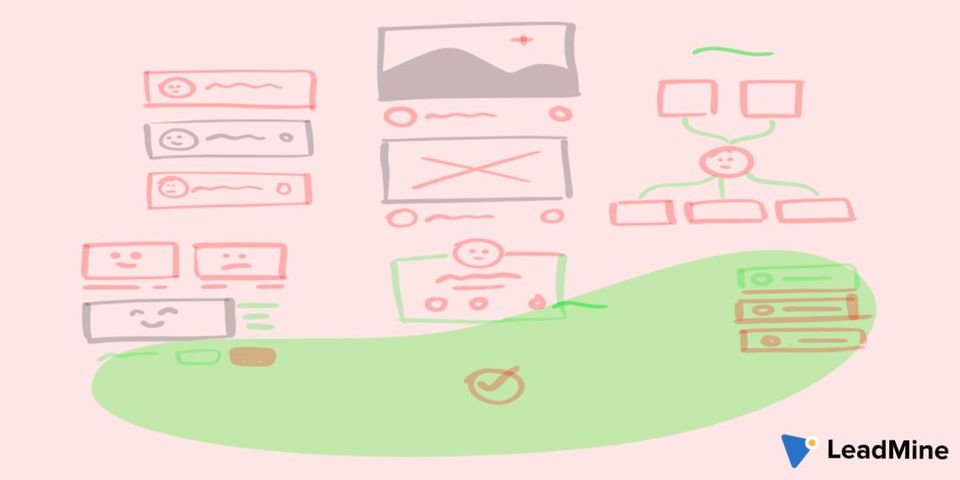Table of Contents
- What is a Customer Profile?
- What questions should My Customer Profile answer?
- What are the different types of Customer Profiles?
- How to create an Ideal Customer Profile?
- Customer Profile Templates to Get Started
- Customer Profile Examples
- Conclusion
Most business owners have huge ambitions: exponential growth, clients that are market leaders, and millions in sales.
However, before your firm can grow, you'll need a strategy for establishing a strong consumer base.
A client profile comes in handy in this situation. It allows you to easily adapt ads to the exact habits, pain areas, and wants of people who are most likely to purchase your products and services.
We'll go over all you need to know about customer profiles in this article, including what they are, how they can help you, and how to establish one for your company.
What is a Customer Profile?
An ideal customer profile is a fictional firm that depicts the type of business that will benefit the most from your product or service. Your sales, marketing, and product teams will be able to work together more efficiently and stay focused on similar goals if you define your ICP.
It's essentially a description of a hypothetical organisation (a firm, a government agency, or a non-profit) that benefits from your product/service while also providing considerable value to your company. It's the type of customer you're looking for, as well as the type of customer who wants to buy from you.
There are several approaches to creating your ideal customer profile, but the most effective is to look at your current greatest customers and identify what they have in common.
What questions should My Customer Profile answer?
To help your marketing and sales teams understand who you're targeting, your consumer profile will most likely need to answer some simple questions. These are some of the things to keep in mind while you work on your client profile and see whether your data can answer them:
- What are the characteristics of the people I'm trying to reach?
- What drives my target audience?
- What is the location of my target audience?
- What kinds of messages do my ideal customers respond to?
- What is my target audience's reaction to a company like mine?
- What kind of goods and services does my target market purchase?
- What type of purchasing journey is important to my target audience?
- What kinds of advertisements does my target audience like to see?
- What kind of material is most appealing to my ideal customer?
What are the different types of Customer Profiles?
There are several approaches to customer profiling, each of which can provide you with useful insight and information on your target users' wants and traits. The following are the most common types of consumer profiling:
Demographic:
Demographics are a customer's concrete traits that can be utilised to understand consumer behaviour in a broad sense. Age, Gender, Job Title, Salary, Education Level, Family Situation, these are included in demographics.
If you're in the B2B arena, other factors to consider include the company's size, industry, and other characteristics.
Geographic:
When location has an impact on how customers connect with a company or receive their products, geographic aspects are important. The most common ways to segment based on geography are city, area, region, and country.
Using geographic data to inform logistics, support implementation, and marketing can all benefit your company.
Psychographic:
Psychographics are used to understand how, when, and why people buy things. Demographics alone aren't enough to understand how, when, and why people buy things. Lifestyle, Goals, Pains Habits, Values, Interests, these variables are related to a customer's attitudes and psychological.
Psychographics are useful for understanding the buying experience, as well as the journey of a consumer after they've made a purchase from you.
Behavioural:
While psychographics are concerned with psychological characteristics, behavioural segments are concerned with how those characteristics are manifested in action. Engagement, Purchase History, Purchasing Readiness, Application of the Product, Satisfaction, Attention to Account Age or Loyalty Required, these are the required segmenting.
Customer assistance segments based on behavioural features are among the most useful. It can assist service teams in discovering customer interaction trends and how these trends translate into recurring revenue and customer pleasure. These things can be improved once they've been measured.
1. How to create an Ideal Customer Profile?
When determining what to add in your client profile, don't just wing it.
Rather, take a methodical approach to gathering data and information on your target clientele.
You can figure out the best ways to contact your target group by studying factors like a customer's needs, buying habits, and more.
Then, to establish customer profiles, follow this guide:
1. Define Why you're doing Customer Profiling?
Consider the following question: What outcomes do I want from this buyer persona? Because customer data and profiling may be used for so many things, having a specific objective in mind for your consumer profiling can help you focus the scope and scripting of your research.
2. Concentrate on Two Factors
These are two variables that are likely to polarise your industry. They may be based on cost, brand familiarity, or something else entirely. Your variables must simply embody an idea that may cause your customers to disagree.
Here's a two-variable example: If you were establishing client profiles for your gym, you could compare 'how often do you attend to the gym?' to 'how do you like to feel when you go there?'
That way, you'll be able to see who goes every day but only works up a small sweat, and who goes twice a week but works so hard they can barely walk away.
3. Make sure the variables you're using are Mutually Exclusive
You don't want respondents to say they go to the gym once a month and then say they go every day, like in the gym example above. By avoiding multiple-choice questions, you may ensure that your variables are mutually exclusive.
You'll get a solid idea of the genuine differences between distinct customers if you make sure your variables are mutually exclusive.
4. With demographic filters, you can bring your Customer Profiles to life
Demographic filters, such as those found on the Attest customer research platform, will give your consumer research a boost.
Demographics like age, gender, and location, when combined with your own behavioural and psychographic inquiries, will provide a far clearer image of your consumer profile.
5. Analyze your data in comparison to your Initial Results
To see the groupings of answers within other factors, cross-tab the key polarising questions in Attest's interactive results dashboard. This will give you an idea of what each of the profiles looks like on the inside.
Make a point of emphasising to your staff all stand-out responses to the questions posed, with a particular focus on customer responses that differed significantly from the population's average response.
6. Repeat
The beauty of consumer profiling is that it's a technique that can be simply replicated. In fact, repeating your consumer profiling study is always a good idea because it ensures you stay on top of any developing trends or shifts in customer or potential customer attitudes.
Repeat every year or so once you've developed your working client profiles, budget and time permitting. With new competitors, influencers, and customers entering the market at the same time, attitudes and status quos will fluctuate over time.
Customer Profile Templates to Get Started
Let's take a look at seven excellent customer-profile templates you can use to get started now that we've gotten a clearer concept of what your customer profile will look like. Each template has a link and a brief description. As a result, you may pick the finest solution for you and get started right away.
1. Aeroleads – Customer Profile Template

Aeroleads' excellent customer profile template may assist you in creating a complete and informative customer profile that answers essential questions.
This template will give you a set of questions to help you get a better understanding of your clients and how you can better serve them. It's divided into three areas to help you create a detailed profile of your consumer's.
2. Fit Small Business – Profile Your Customers
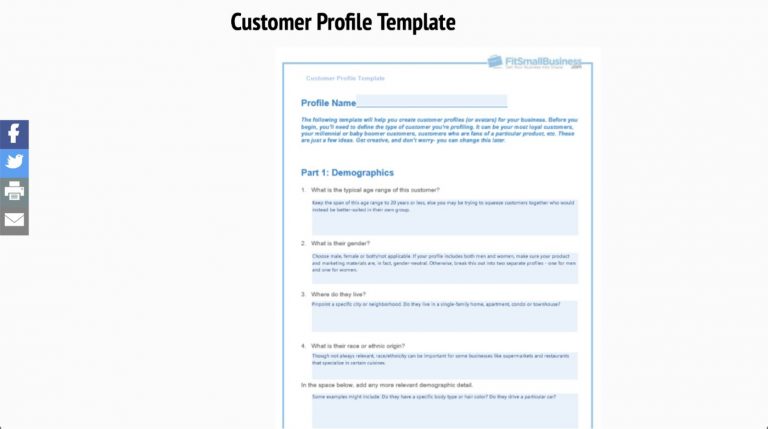
Fit Small Business's customer profile template can assist you in creating detailed profiles for your various consumer segments. This template might assist you in profiling your local clients or new prospects.
You can construct profiles with whichever programme you like because the template is available in Word and PDF formats.
3. Advanced Systems – A Detailed Customer Profile Template

Advanced Systems' customer profile template allows you plenty of room to fill out each customer's demographic and psychographic information. This template, like the others, includes intriguing fields that will aid in the creation of a robust form.
We particularly appreciate the psychographics component of this template, which can help you present your salesmen with some extremely interesting information that they can utilize to work as efficiently as possible.
Customer Profile Examples
You should end up having complete profiles or information on client type as a result of your customer profiling work, which you can use to inform your marketing messaging, new product development, and much more.
Customer personas and information will always be important to your firm, whether you're constructing a B2C customer profile or a B2B customer profile.
1. The Five Abilities
Did you know that the average salesperson spends about 65 percent of their time on activities that do not generate revenue?
Building customer profiles that don't just focus on your ideal client—but also the features that indicate someone might not be a good fit—is a wonderful approach to avoid wasting time.
You don't want to waste time converting someone who isn't likely to buy, do you?
Consider the following example from The Five Abilities:
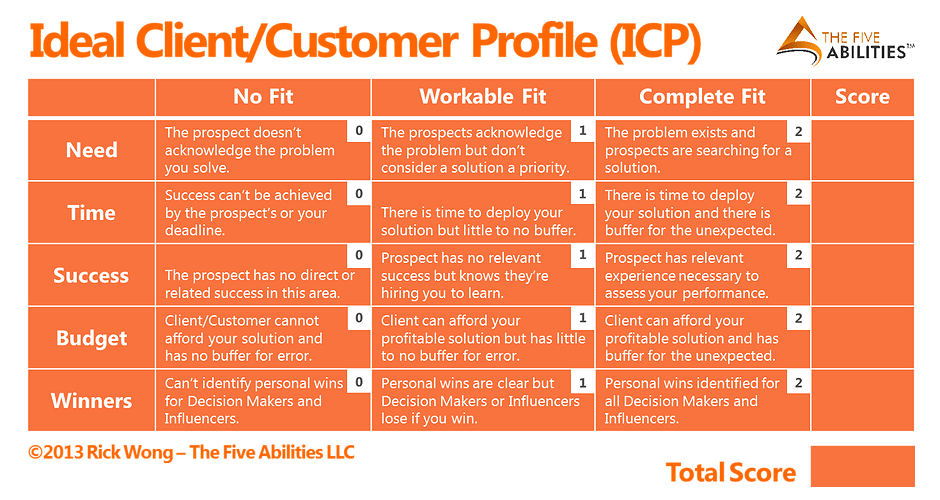
The firm behind this user profile keeps track of attributes that indicate leads aren't a good fit, as well as those who could convert if nurtured properly. This enables their team to decide which leads to convert first.
2.Profile with Customer's Interests
Create a map of this customer's interests based on demographics, psychographics, behavioural, and environmental factors such as age, interests, work role, gender, geography, and more.
With this information, you'll be able to devise a strategy for reaching out to these clients on a regular basis.
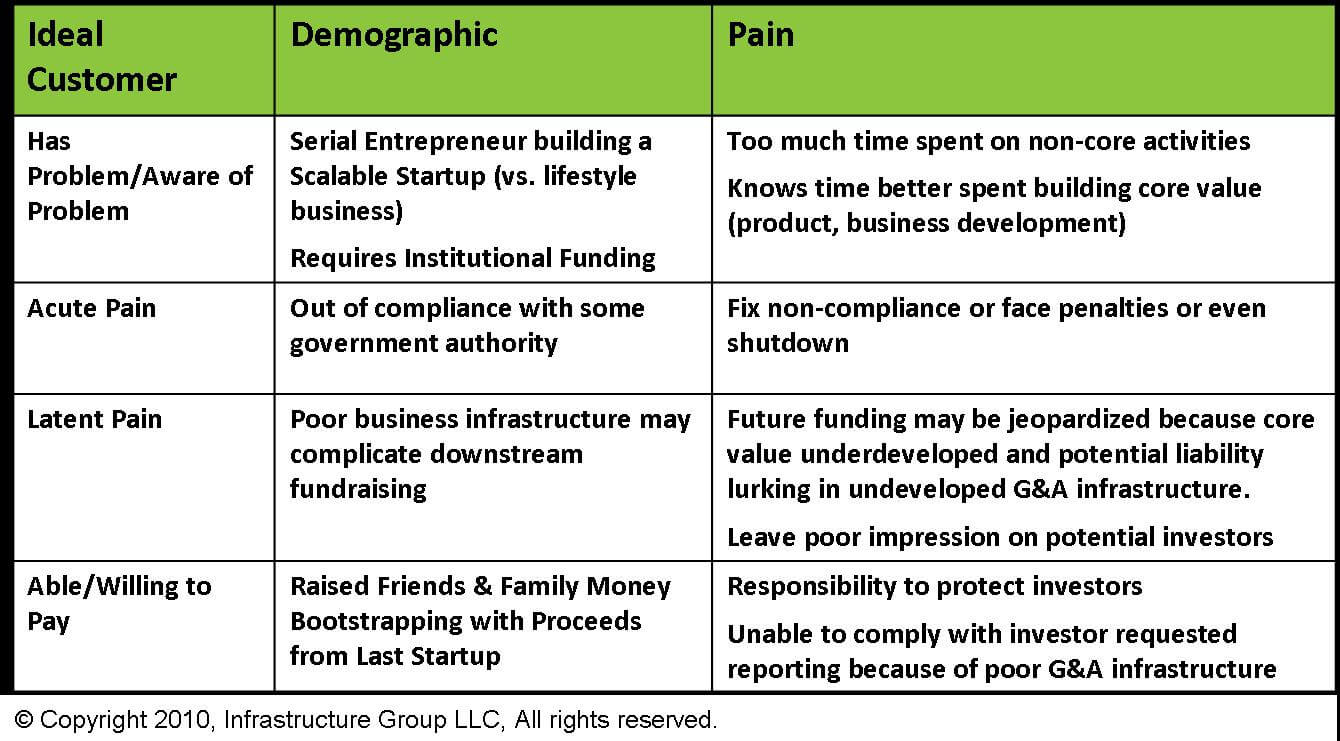
3. Basic Information
It contains all of the essential information regarding this customer category that we require. Background information, demographics, and pain points are all included.
If you're seeking to create a simple customer profile, this is a wonderful framework to use. While the data is superficial, it is sufficient to provide you with an accurate picture of your target audience.
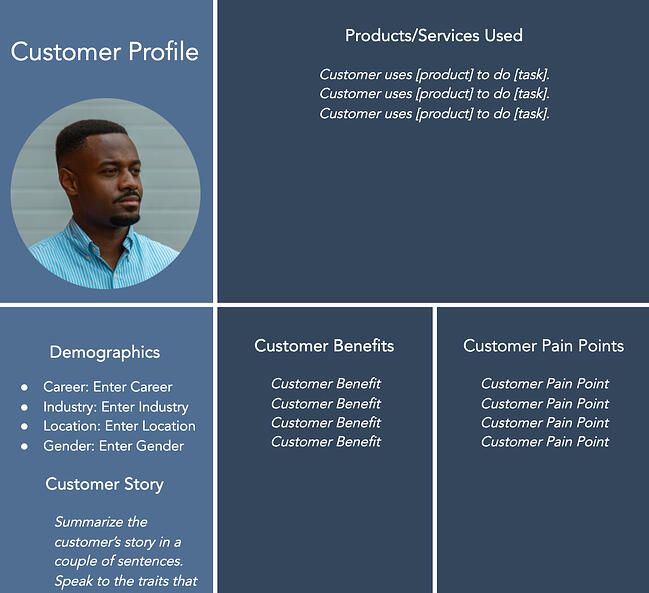
Conclusion
Customer profiles are unquestionably important for any sales or marketing team.
The more information you have about your consumers, the better your chances of tailoring their messaging are. This will almost certainly increase your chances of converting them, especially because 86 percent of purchasers prefer to buy from a firm that provides individualised experiences.
Remember to establish new buyer personas for any distinguishing character feature that doesn't currently fit into an existing profile, poll your existing customers, and base your customer profiles on genuine data rather than conjecture.
It's an excellent way to locate (and nurture) the leads you're attempting to convert into clients.
LeadMine : Find your next customer in minutes, not months.
LeadMine is a lead generation platform used by all types of businesses. From over 200 million contacts, you may identify your target b2b leads as well as their email addresses.
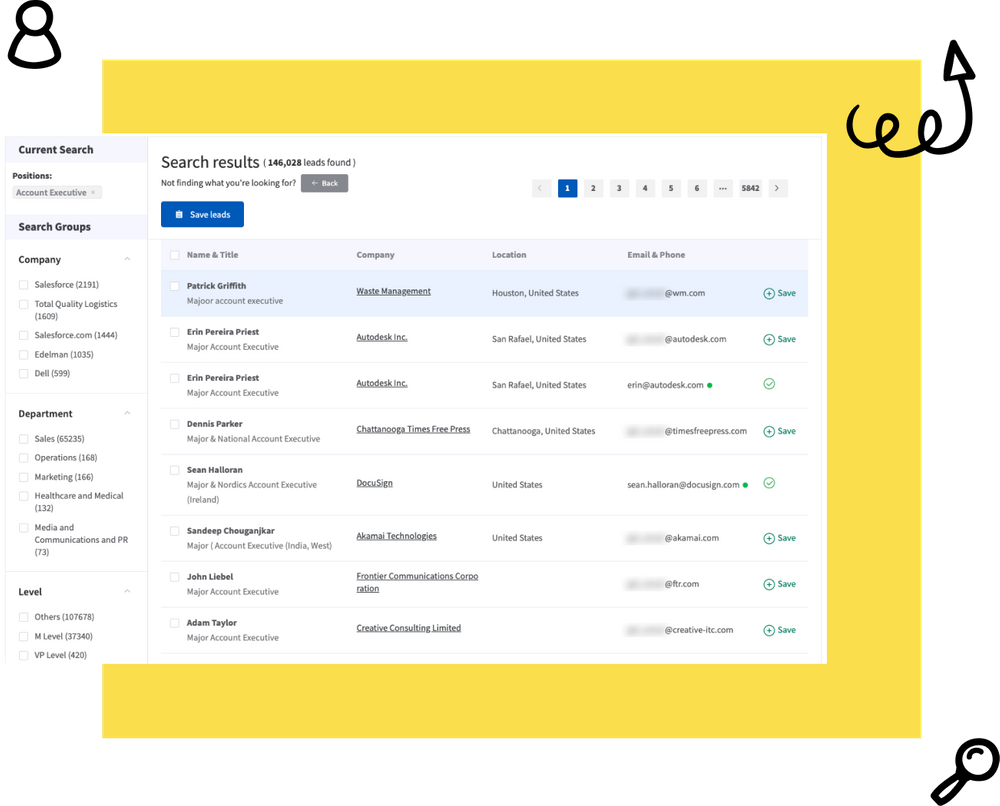
Start your Lead Generation for free today!
- 30 days free trial
- No credit card
- Cancel any time



